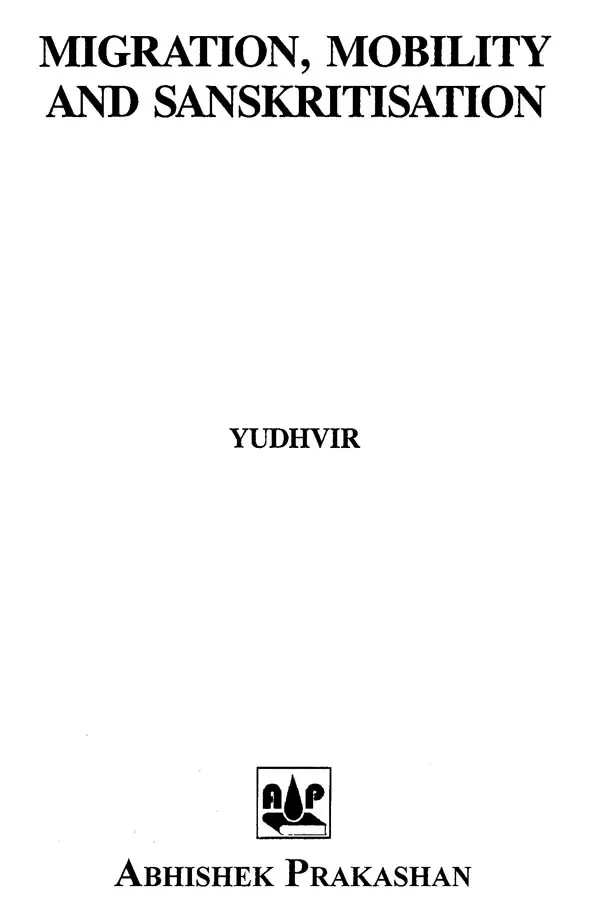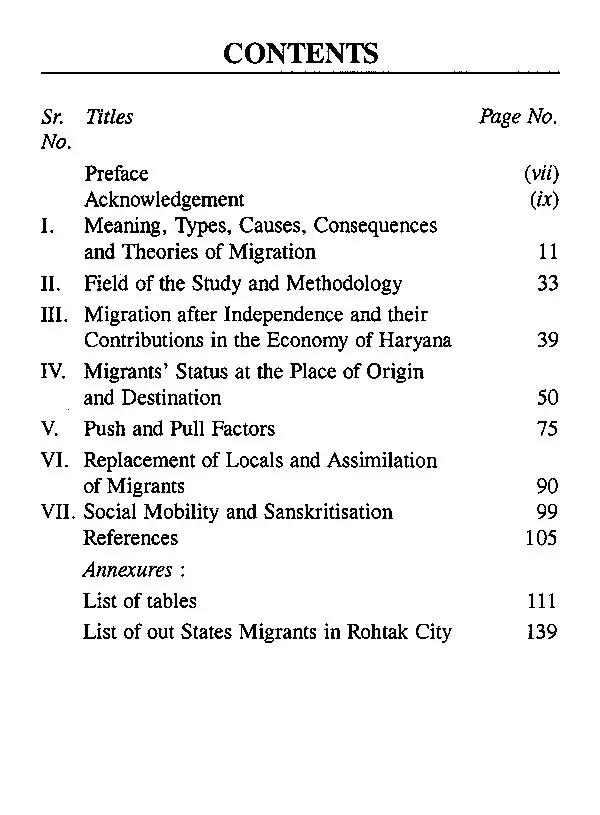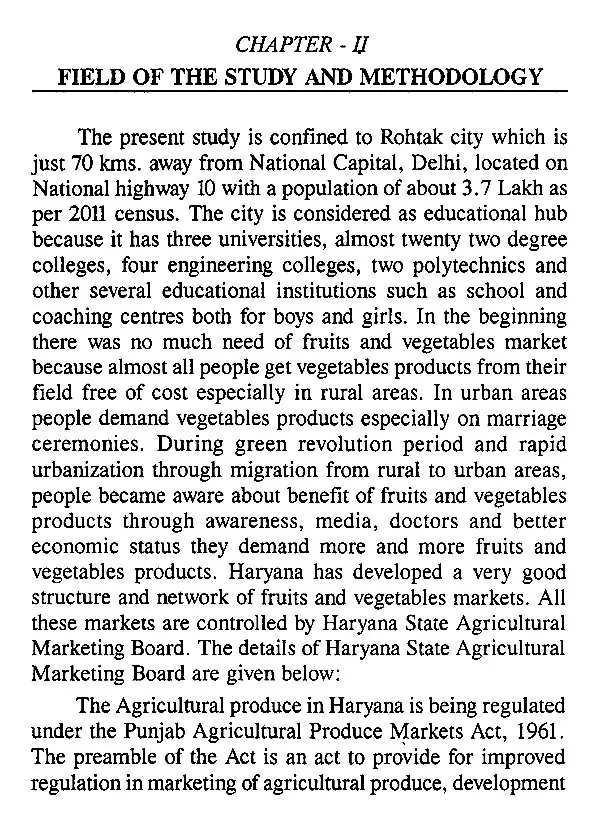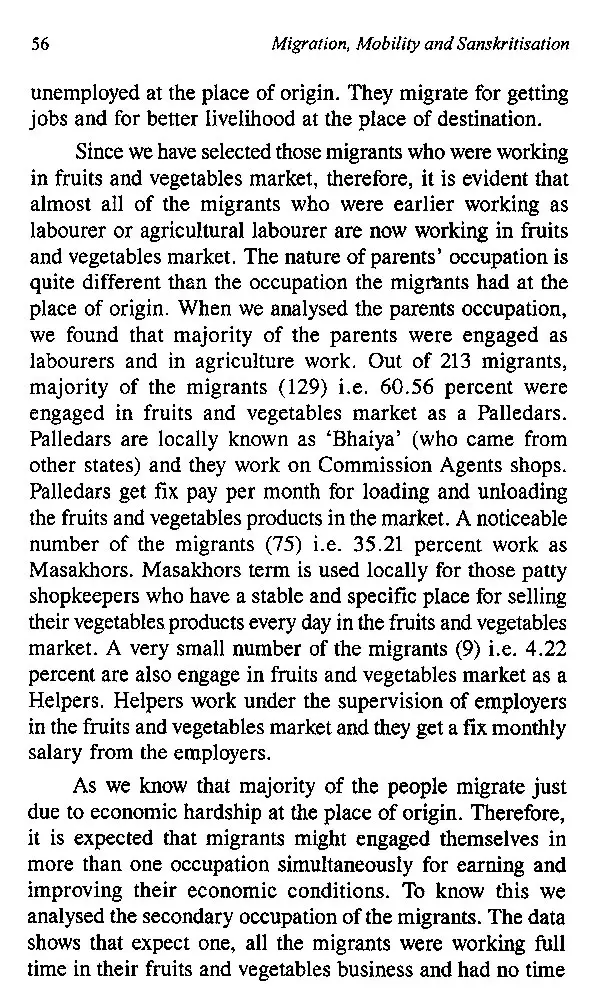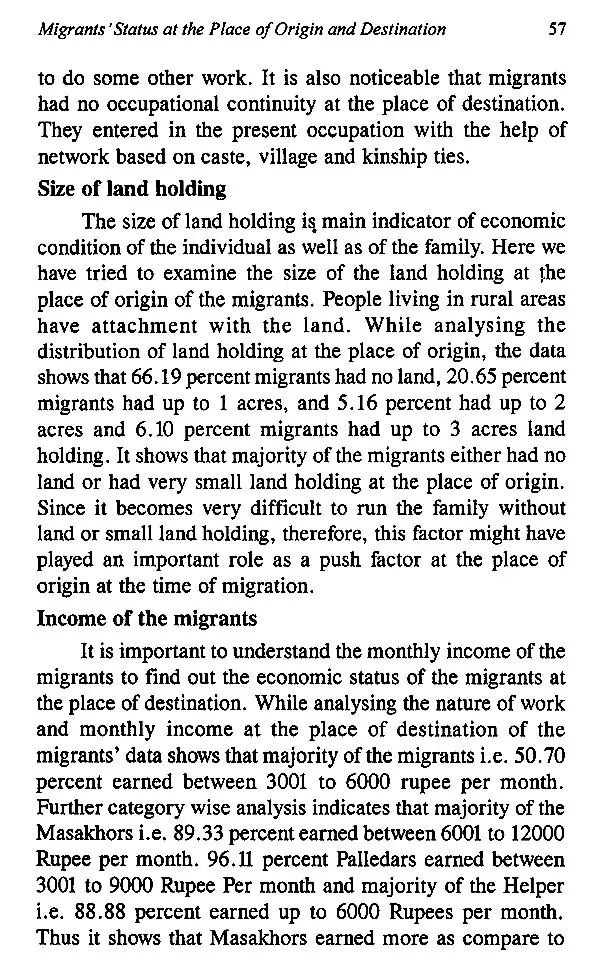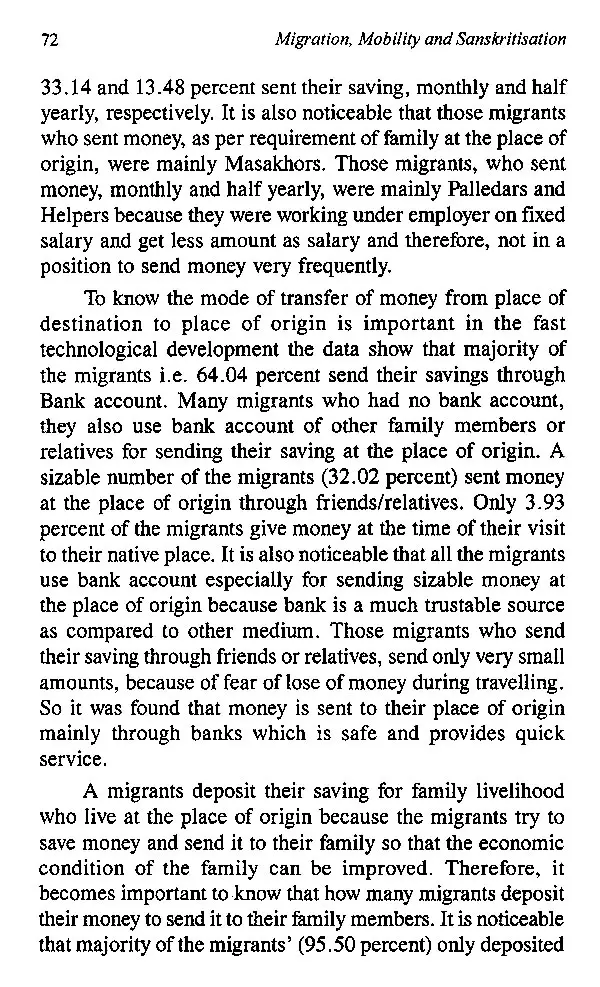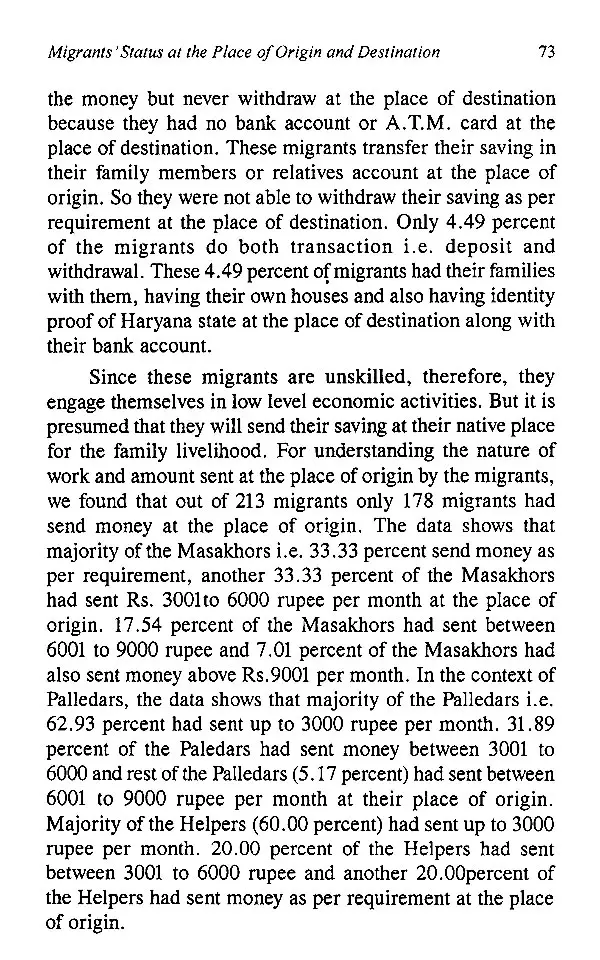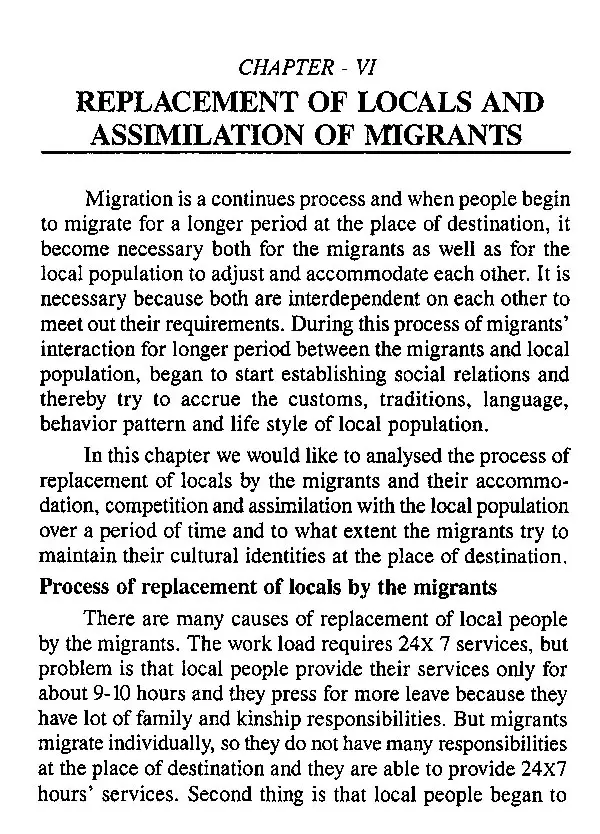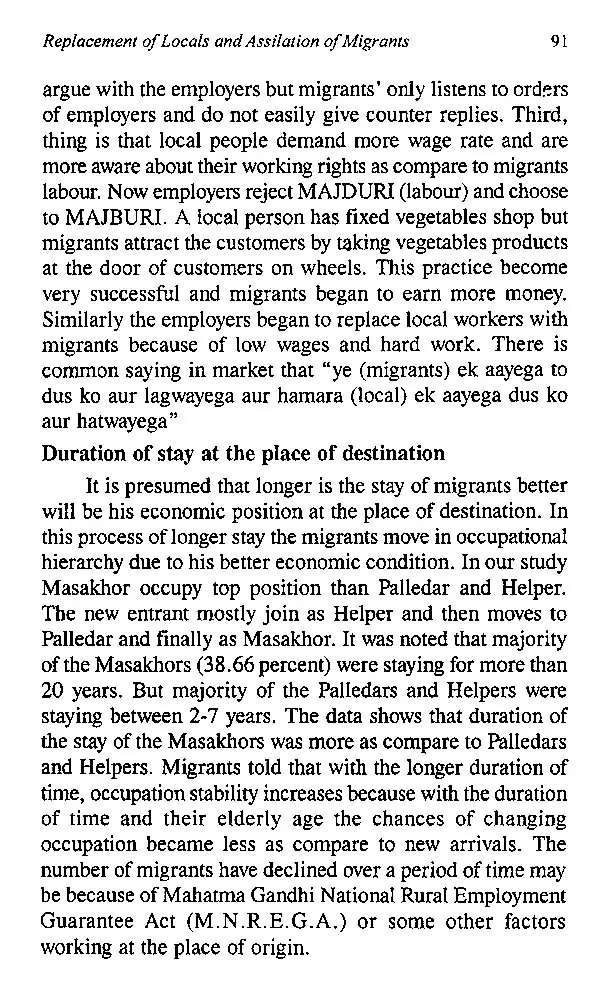
Migration Mobility and Sanskritisation
Book Specification
| Item Code: | UAG892 |
| Author: | Yudhvir |
| Publisher: | ABHISHEK PRAKASHAN, DELHI |
| Language: | English |
| Edition: | 2015 |
| ISBN: | 9788183901475 |
| Pages: | 150 |
| Cover: | HARDCOVER |
| Other Details | 9.00 X 6.00 inch |
| Weight | 330 gm |
Book Description
The main focus of this book is to understand the process of migration and how push and pull factors operate at the place of origin and destination. This mobility also leads to sanskritisation in Indian society. Due to sanskritisation process local people belonging to lower castes leave their traditional occupations because these occupations are stigmatized and not much fruitful. So leaving stigmatized occupations create an occupational vacuum in the society; because nobody wants to do these inferior occupations. Therefore, migrants easily enter in these occupations without investing much amount. They (migrants) fulfill the vacuum of lower caste people's occupations especially in urban areas. This kind of social mobility due to migration helps the migrants in improving their status at the place of origin which can be termed as a process of sanskriti sation at the place of origin.
When sociologists talk about the castes system they tend to discuss it as a form of social stratification or as a system of social inequality. Louis Dumont, while analysing caste system, drew a distinction between 'hierarchy' and 'stratifi cation. For "caste is an expression of hierarchy-a consciously organized principle, whereas stratification refers to layers which are constructed on the basis of a set of criteria. Andre Beteille, while talking about social inequality, has considered two aspects, namely, 'distributive' and 'relational". as vital to the understanding of social divisions based on caste system. For him, the distributive aspects refer to the ways in which different factors such as income, wealth, occupation, education, power, skills, etc, are distributed among the people (while relational aspect) refers to the ways in which individuals are differentiated based on these criteria. Difference and hierarchy both characterize the caste system. Both lead to social inequality and differential access to resources. Ascription as the basis of rank/ status has given a way to the rigidity of the caste system. This is how the castes which have higher status (based on birth) have more access to better opportunities than those castes which are lower based on birth. Caste system has become an all encompassing system, a model for finding social, cultural, political and economic relations.
In Indian caste context; Srinivas also challenged the then prevalent idea that caste was a rigid and unchanginginstitution. The concept of Sanskritisation addressed the actual complexity and fluidity of caste relations. According to him, Sanskritisation had been occurring throughout the Indian history. It may be viewed as the model of social mobility in India. After independence of the country, the issue of social mobility became more complex and cases of Sanskritisation, de-Sanskritisation as well as re-Sanskriti sation were observed.
The process of 'Sanskritisation' is more common in urban areas because urban areas have diversity of occupation activities and more liberal to choose their occupations as compared to rural areas where occupation is decided by birth in a particular caste. So the lower castes people leave their traditional occupations and follow to upper caste's occupa tions, customs and belief to improve their status. Therefore, local people belonging to lower castes leave their traditional occupations because these occupations are stigmatized and not much fruitful. So leaving stigmatized occupations create an occupational vacuum in the society; because nobody wants to do these inferior occupations. So lower castes people's occupations has not much competition, therefore, migrants easily enter in these occupations without investing much amount. They (migrants) fulfill the vacuum of lower caste people's occupations especially in urban areas, therefore, keeping in view the gap in existing literature, the present book deal with Migration, Mobility and Sanskritisation in Indian society.
The word 'migration' derives from the Latin verb 'migrare', meaning "to move from one place to another." Migration may mean either a temporary or a permanent change of residence by one person or by a group of people. Two other words associated with migration are "emigrant" and "immigrant." An emigrant is someone who leaves one place for another. An immigrant is a person who comes into one country from another. Thus, a person who migrates to the United States from India is an emigrant from India and an immigrant to the United States.
Literally, the term 'migration' means settlement or shifting of an individual or a group of individuals from one cultural area or physical space to another, more or less permanently. The term has been defined in the New Webster's Dictionary (1966) as (i) the act or an instance of moving from one country, region or place to settle in another and (ii) the act or instance of moving from one area to another in search of work. These days, the meaning and scope of migration has become more complex and it is felt that mobility in physical space cannot fulfill the definition of migration. Different scholars have understood the term migration in different ways.
Paterson (1958), defines migration as "movement motivated by the individual willingness to risk the unknown of a new home and breaking from a familiar social universefor the state of adventures, achievement of ideals, or to escape a social system from which he has became alienated".
Chauhan (1966), defines migration as "change of residence from one geographical area to another for a certain specified period of time (one year or more)".
Lee (1966), defines migration broadly as a permanent or semi-permanent change of residence. No destination is placed upon the distance of the move or upon the voluntaryand in voluntary nature of the act and no distinction is made between external and internal migration.
According to I.L.O. (International Labour Office): has suggested in its studies that the statistics of temporary migration should cover that person who passes from one country or one place to another for more than a month and not more than a year and on the other hand, the statistics of permanent migration should comprise of those person who move from one place to another for more than a year.
Migration was recorded beginning from the first Census of India conducted in 1881. These data were recorded on the basis of place of birth. However, the first major modification was introduced in 1961 Census by bringing in two additional components viz.; place of birth i.e. village or town and duration of residence (if born elsewhere). Further in 1971, additional information on place of last residence and duration of stay at the place of enumeration were incorporated. Information on reasons for migration was incorporated in 1981 Census.
Migrants Defined by Place of Birth
If a person born in the village or town where he/she is being enumerated, the person is not a migrant. However, in case of person born outside the place of enumeration, the enumerators were advised to ascertain if there place of birth was a village or town at present. If village, it was consideredrural and if town it was urban, but, it is possible that at the time of migration the status of the place of birth might be different particularly in those cases of migration.A person born in other state of India or in any foreign country was recorded accordingly. When a person born on the high seas, it was recorded 'born at sea' and no administrative or territorial status was assigned. However, in the case of person born in train, boat or bus or aircraft etc within the country, the administrative and territorial status was determined for them and recorded in relation to the place where the birth has actually occurred.
It is easy to determine the migrants/non migrants status of a person if place of birth is known, but if a person migrates from his or her place of birth and returns at the time of census enumeration, his or her place of birth and place of enumeration will be the same. As a result the person will not be classified as migrant. The census question on place of birth is, therefore, not able to capture the return migrants.
Migrants Defined by Place of Last Residence
Last residence at some prior place of last residence is most commonly used as measure to determine the migrant's status of a person. In some countries, date is also introduced. For example, census of Mozambique collected data on where people were living at the end of the war in 1992' (Bell, 2003). Several instructions provided in determining place of last residence seem to be anomalous and need revision in order to make data on migrants more meaningful for the formulation and evaluation of various policy and programmes of the government. **Contents and Sample Pages**
